All methods of planting and growing alyssum and caring for flowers.
| Content:
|
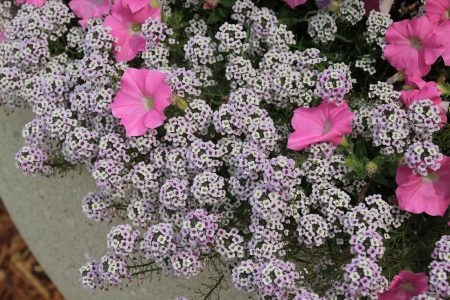
This is what a blooming alyssum looks like.
Every novice gardener wants to quickly decorate their garden with beautiful plants.But many cultures are very demanding on environmental conditions, and you have to work hard before getting the desired result. Therefore, I would like to draw attention to an unpretentious and delicate plant - alyssum. Growing and caring for alyssum does not require much effort, and the returns from growing this plant will exceed all expectations.
The most common colors of alyssum are: yellow of various shades, white, pink of various tones, purple or lilac. Alyssum captivates with its long and fragrant flowering, beginning in spring and continuing until frost.
Alyssum propagation
One copy is not enough when registering a personal plot. Therefore, novice flower growers will definitely be faced with the question: how to propagate this miracle of nature.
Alyssum reproduces in three ways:
- cuttings;
- dividing the bush;
- seeds.
It is easy to propagate and grow alyssum at home using any of these methods.
1. By cuttings
To give alyssum bushes a neat appearance, periodic pruning is necessary. If the pruning took place in June-July, then from the pruned cuttings you can grow full-fledged young specimens of the crop.
- The cuttings chosen are not quite young, but not old either. The old one takes longer to take root, but the young one may rot.
- It is better to choose a branch with a fork so that the plant develops from two or more shoots. The bush will be more lush. This method is indispensable when you need to propagate particularly valuable or rare species.
- Before planting, it is necessary to remove excess leaves and flower stalks from the cuttings.
- Plant the cuttings in a mixture of peat and sand. This can be done directly in the garden bed, covering the cuttings with a transparent cover.
- The soil mixture should always be moist, but without stagnant water. Roots form in 7-15 days.The timing depends on the quality of the cuttings and the weather.
- After 2-3 weeks, you can remove the cover from the rooted bushes.
2. Dividing the bush
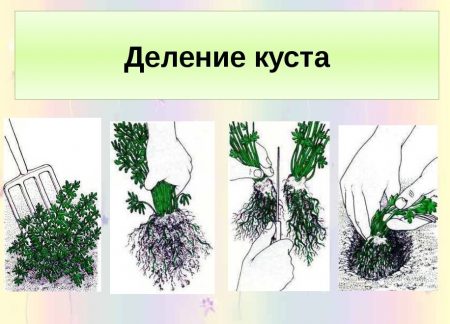
Reproduction of alyssum.
Alyssum bushes at the age of 3-4 years are divided in the spring, before the start of the growing season. They are divided into parts while maintaining a sufficient number of roots. Before rooting, each part of the planting is watered regularly.
3. Growing from seeds
Alyssum from seeds are grown seedling and non-seedling methods. In turn, the seedless option can be divided into spring and autumn sowing.
Growing alyssum from seeds
Growing alyssum from seeds is the most popular and effective way. Its success depends not only on the quality of the seeds, but also on the correctly selected soil mixture, timely care, and a comfortable microclimate.
1. Sowing seeds in the ground in spring
From the second half of April, in most of Russia, the weather allows you to sow alyssum directly into the beds. Shoots appear in 40-45 days. When sowing in open ground, the period of adaptation of plants to climatic conditions is excluded.
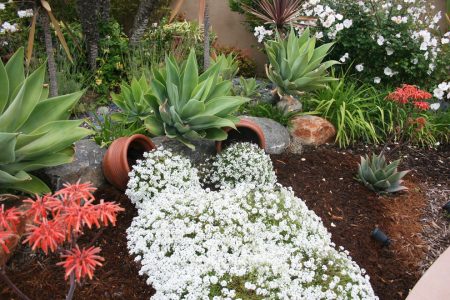
Alyssum in the flower garden
Seeds are sown in a permanent place or in a temporary (seedling) bed, after which the strengthened seedlings dive into flower beds, borders or alpine hills.
Spring planting consists of the following activities:
- choosing a sunny place;
- soil preparation: digging, clearing weed roots, moistening;
- design of shallow grooves or holes (maximum 5 mm);
- mixing seeds with river sand;
- sowing in prepared grooves (holes);
- Sprinkling the seeds with a thin layer of sand. There is no need to cover the plantings with film;
Something to remember! Seed consumption when planting alyssum in open ground is somewhat higher, since germination in the fresh air is worse than in a room.
The first shoots will appear as soon as the earth warms up to a comfortable temperature for them - about +15 degrees. Now you can’t neglect weeding; weeds can choke out the tender shoots.
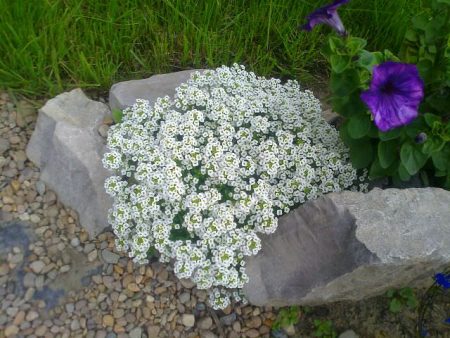
Alyssum bush.
If necessary, frequent shoots are thinned out and transplanted to other places. The optimal distance between seedlings is 15-20 cm. Thickening of plantings negatively affects the number and size of flowers.
At the initial stage, plantings are shaded from direct sunlight.
2. Sowing seeds in the ground in the fall
Alyssum seeds overwinter well right in the beds, so you should not refuse to plant them before winter. There they undergo stratification under natural conditions. Late sowing is used for perennial varieties, resulting in increased seed germination.
The technology for autumn planting of alissum is as follows:
- The soil is prepared before the onset of frost in the same way as for spring sowing, but without moisture.
- Make holes for the seeds.
- Seeds are sown dry in November, after the onset of low temperatures.
- Dry sand is poured into the depressions, then the seeds are sown and sprinkled with soil on top.
After the earth warms up, in the spring of next year, friendly shoots will appear. Such plants are compact, more resistant to diseases and weather changes, compared to seedlings grown indoors.
Self-seeding also overwinters safely and next year may appear where it was not expected.
3. Growing through seedlings
Growing alyssum through seedlings is a reliable and productive method. The seedling method allows you to get flowering plants a month earlier than when sowing directly into the beds.
Technology of growing alyssum through seedlings
Strong, healthy seedlings can be obtained if you follow several immediate requirements when sowing.
1. What kind of soil is needed for growing seedlings?
For cultivation, drained, neutral or slightly acidic or slightly alkaline soil is preferable.
2. When to plant alyssum seedlings
Depending on the region, alyssum can be sown from the end of March to the second ten days of April. At the beginning of June you will already enjoy flowers and their aroma. Sometimes flowering begins on the windowsill.
3. Sowing seeds
- To sow seeds, you will need a container (cassettes, containers, boxes or just plastic cups) at least 4 centimeters deep, with drainage holes.
- The soil is moistened before planting. The seeds are mixed with river sand and sown evenly.
- Next, there are two options. The first is when the crops are covered with a very thin layer of earth. The second is when the seeds are lightly pressed into the ground, without sprinkling with anything.
- In any case, the crops are then moistened by spraying water at room temperature.
4. What conditions must be created for seed germination?
For successful seed germination, minimal conditions are required. Humidity is maintained by covering the container with the crops with film, or glass, or any transparent cover.
To prevent the appearance of mold, the mini-greenhouse is ventilated daily. Comfortable temperature for seedlings is +20 - +25 degrees. Until the sprouts appear, the seedling container can be kept in a dark room.
5. Caring for seedlings
As soon as the seedlings appear, the seedling container is moved to a well-lit place and the temperature is reduced to +16 - +18 degrees so that the seedlings do not stretch out. After 3-4 pairs of leaves appear, the tops of the seedlings are pinched.This procedure encourages the plant to branch, which improves its decorative effect.
If the grown seedlings are cramped in the seedling box and it is too early to plant them outside, then it is necessary to plant them in separate cups. After picking, it is advisable to water the seedlings a couple of times with Radifarm fertilizer.
Planting alyssum in open ground
The most convenient time for planting seedlings in the garden: the end of May - the first ten days of June. Choose a sunny place for planting alyssum. Each plant is planted in holes at a distance of 15-20 cm from each other. With more frequent planting, the plants are crowded, they begin to stretch, the inflorescences become smaller and thinner.
Caring for alyssum in open ground
There are no difficulties in caring for alyssum. You just need to make sure that the soil does not dry out, cut off faded flower stalks in a timely manner, and feed the plants if necessary.
Watering
Alyssum tolerates drought better than excess moisture. If there is a lack of moisture, the plant drops buds, and if there is too much moisture, it gets wet and dies. Abundant watering is effective if the soil drains moisture well and during drought.
To determine the need for watering, check the soil moisture at a depth of 2-3 centimeters. If the soil is dry, then you need to water it
Feeding
Alyssum grows well in poor soils, so it only needs fertilizing to ensure full flowering.
At the beginning of the growing season, it is recommended to feed with nitrogen fertilizer, for example, Agricola-7. For irrigation, dilute 1 tablespoon of Agricola-7 and urea in 10 liters of water.
Perennial varieties require only one feeding in early spring. However, in case of infertile soil, they are fertilized as needed.
Yearlings need to be fed much more often - up to 4 times per season.Fertilizing has a beneficial effect on the size and number of inflorescences.
Pinching-trimmings
In spring, on perennial varieties, it is necessary to cut off dried flower stalks, dry and damaged shoots. It is useful to pinch young shoots to encourage them to produce new shoots.
Alyssum bushes begin to lose their decorative effect over time. Their stems become bare and the number of inflorescences decreases. When the first wave of flowering has passed, the plant is freed from dry shoots.
Sanitary pruning of shoots to 6-10 centimeters restores their attractive appearance and provokes alyssum to resume flowering.
Diseases, pests and treatments
Late blight (brown rot)
The roots and root collar of the plant rot. To a large extent this is the result of improper care.
Cause - excess moisture and low soil permeability.
Treatment - treatment of all plants with fungicides: Ordan, Bordeaux mixture, Kuproxat. Watering is temporarily stopped.
Powdery mildew
Affects leaves (white coating forms). The leaves stop growing, they turn black and die.
Cause of the disease may be caused by excessive pruning, excess nitrogen fertilizers, or temperature changes.
Treatment - treatment with Bordeaux mixture, Fundazol or Fitosporin-M.
Downy mildew can be treated with five times treatment at weekly intervals with fungicides Ordan, Bravo or 1% Bordeaux mixture.
Viral mosaic not treated. A plant infected with viral mosaic will have to be destroyed.
Cruciferous flea beetle
The cruciferous flea beetle is the most aggressive pest. In a week it can eat all the buds and make holes in the top leaves. The best remedy for flea infestations is prevention. For prevention, any remedy designed to combat it, for example Iskra, is suitable.Treatment is carried out once every 2 weeks.
More often, flea beetles affect plants planted later or from self-seeding. And the early sown alyssum, and already grown, the flea skips by. Plantings attacked by cruciferous flea beetle are watered with Aktar. Watering protects for a longer time than spraying.
In the fight against caterpillars, treating all parts of the plant with tobacco infusion is effective.
Cabbage moths and white moths are destroyed using the insecticides Bitoxibacillin or Lepidocid.
Alyssum in garden design
In garden plots, the use of alyssum is limited only by the imagination of their owners. This crop is often used in the design of ridges, borders, mixborders, and alpine slides. Clouds of fragile, delicate flowers will emphasize the individuality of other flowers.
Combination of alyssum with petunia and tulips creates the effect of a floral fountain, which fragrant the entire garden with the amazing aroma of herbs and honey. They can also be used to cover vacated areas after bulbous crops (daffodils, hazel grouse, tulips, white flowers).
A soft fluffy carpet of alyssum inflorescences is also used by landscape designers to decorate parks and squares.
Alyssum varieties
It is better to purchase seeds of various varieties of alyssum in trusted stores. In some companies involved in packaging and selling seeds, there is a free renaming of varieties. This is fraught with a waste of time and money, and disappointment from buying the wrong seed material for which you were counting.
Alyssum rocky
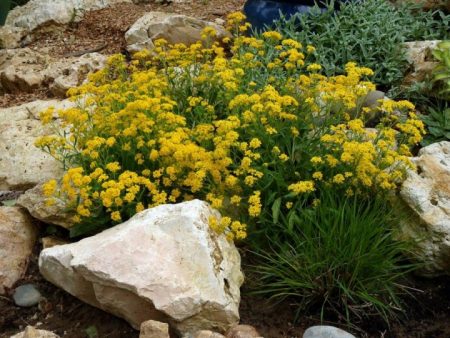
In the photo rock alyssum
Ground cover perennial. Stems up to 30 cm long spread along the surface, filling the space. The leaves remain green all year round. Lush inflorescences consist of small, yellow flowers of different shades.Blooms up to 55 days, rarely blooms in late summer. Easily takes root in rock crevices and at the joints of paving slabs. Used to decorate alpine slides.
Popular types:
• Compactum – short (18 cm);
• Citrinum – flowers of an intense lemon hue;
• golden wave – a lush bush up to 20 cm high. It begins to bloom only at the age of 2 years;
• Plenum – bush height up to 30 cm. Distinguished by double golden inflorescences.
Alyssum snow carpet
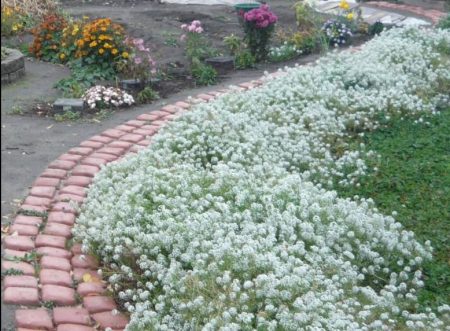
In the photo there is a snow carpet of alyssum
An annual plant with a pleasant honey aroma. Grows up to a maximum of 20 centimeters in height. Under the abundance of small flowers, shoots and leaves are not visible. Seeds are sown from April to June. Flowering lasts until the first frost. Alyssum Snow Carpet reproduces well by self-sowing and is able to grow where other flowers do not grow.
Alyssum marine

Marine alyssum in the photo
Heat-loving perennial from 8 to 25 cm in height. In central Russia it is grown as an annual. It is characterized by creeping stems, small flowers of various shades with a unique aroma.
Popular types:
• Esther Deep Rose – dwarf (8-10 centimeters) with intense flowering. The corollas are cream colored.
• Princess in Purple – ampelous with lilac-pink flowers.
• Violet Konigin - a compact bush 10-15 cm high, with dense branched shoots, purple flowers.
Mountain alyssum
Mountain alyssum is a frost-resistant perennial with a height of 5 to 30 centimeters with vertically located and creeping branches. The leaves are small, densely pubescent, gray-green.
Continuation of the topic:
- Growing lobelia from seeds
- Korean chrysanthemums, planting and care
- How to grow gatsaniya from seeds
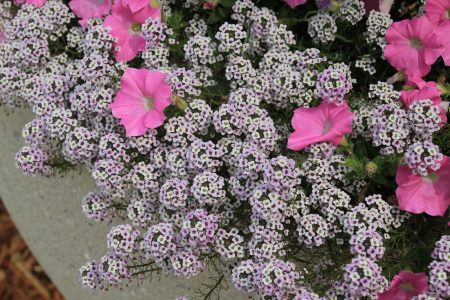
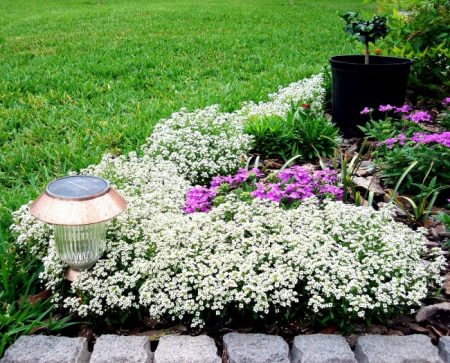
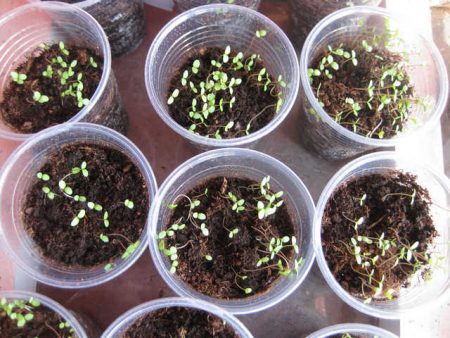
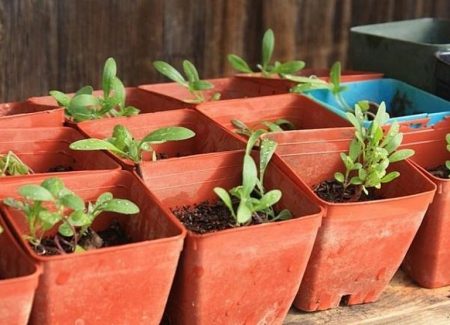
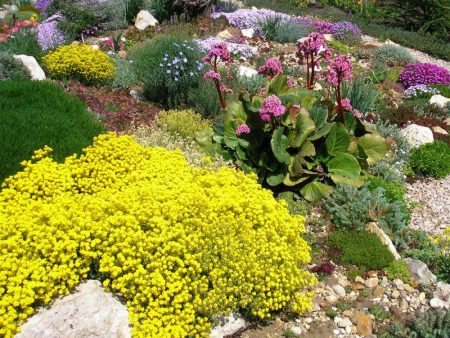
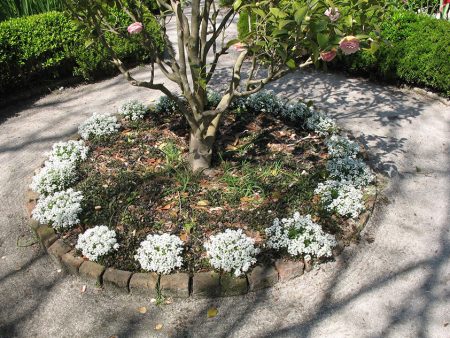
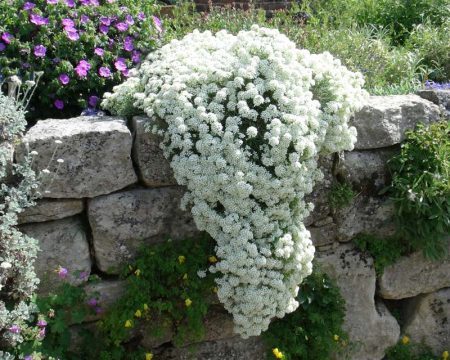
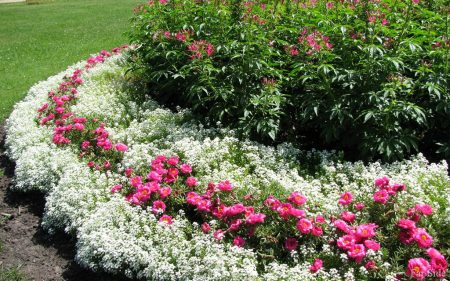
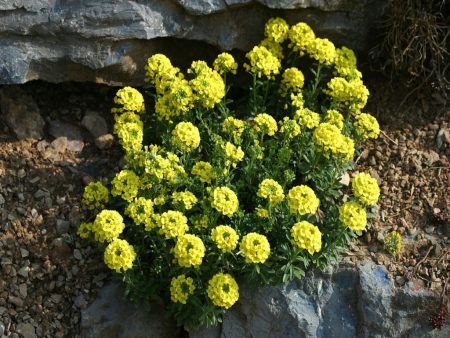

 CUCUMBERS NEVER GET SICK, I'VE BEEN USING ONLY THIS FOR 40 YEARS! I SHARE A SECRET WITH YOU, CUCUMBERS ARE LIKE THE PICTURE!
CUCUMBERS NEVER GET SICK, I'VE BEEN USING ONLY THIS FOR 40 YEARS! I SHARE A SECRET WITH YOU, CUCUMBERS ARE LIKE THE PICTURE! You can dig a bucket of potatoes from each bush. Do you think these are fairy tales? Watch the video
You can dig a bucket of potatoes from each bush. Do you think these are fairy tales? Watch the video
 How our fellow gardeners work in Korea. There is a lot to learn and just fun to watch.
How our fellow gardeners work in Korea. There is a lot to learn and just fun to watch. Eye trainer. The author claims that with daily viewing, vision is restored. They don't charge money for views.
Eye trainer. The author claims that with daily viewing, vision is restored. They don't charge money for views. A 3-ingredient cake recipe in 30 minutes is better than Napoleon. Simple and very tasty.
A 3-ingredient cake recipe in 30 minutes is better than Napoleon. Simple and very tasty. Therapeutic exercises for cervical osteochondrosis. A complete set of exercises.
Therapeutic exercises for cervical osteochondrosis. A complete set of exercises. Which indoor plants match your zodiac sign?
Which indoor plants match your zodiac sign? What about them? Excursion to German dachas.
What about them? Excursion to German dachas.